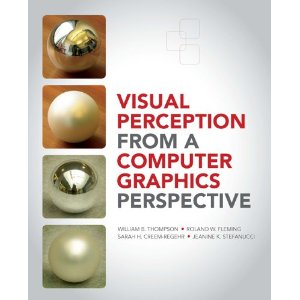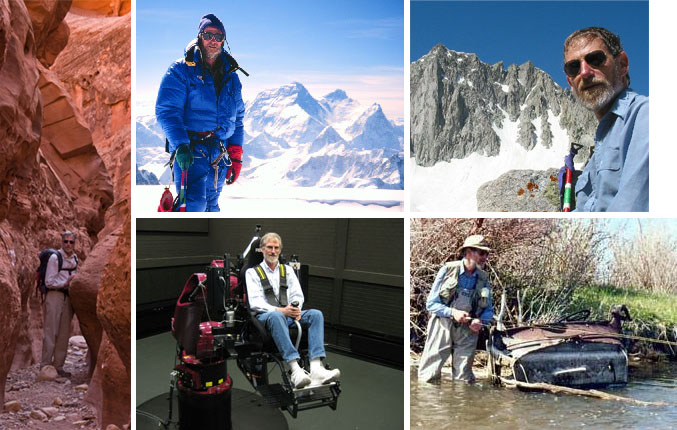My book:
 W.B. Thompson,
R.W. Fleming, S.H. Creem-Regehr, and J.K.
Stefanucci, Visual Perception from a Computer Graphics
Perspective,
CRC Press, 2011.
W.B. Thompson,
R.W. Fleming, S.H. Creem-Regehr, and J.K.
Stefanucci, Visual Perception from a Computer Graphics
Perspective,
CRC Press, 2011.Teaching
I am no longer accepting new graduate studentsResearch:
Professor Thompson's primary research interest is in the area of computational vision, with an emphasis on problems involving the determination of spatial organization.Recent research group publications
Google Scholar profile
- Visual Perception
and Spatial Cognition
This research aims to understand the information and processes used in spatial behavior, using a multidisciplinary approach involving psychology and computer science in the service of both basic and applied research goals. Part of the research focuses on increasing the effectiveness of computer graphics in conveying information about the three-dimensional world. A significant portion of the work involves immersive virtual environments, both to understand perceptual performance in these devices and to use them as a tool to approach basic research questions in perception and action.
- Designing
Visually Accessible Spaces
Research ultimately aimed at provide tools to enable the design of safe environments for the mobility of low-vision individuals who may need to operate under low luminance and other visually challenging conditions. This is a multi-university, multi-disciplinary effort involving clinical low vision, visual science, perceptual psychology, and computer graphics.
Previous work:
- Visual Motion
Much of Prof. Thompson's prior research deal with the analysis of visual motion. This included optical flow estimation, detection and interpretation of discontinuities in optical flow, and the detection of moving objects from non-stationary viewpoints.
- Vision-Based Navigation in
Unstructured, Outdoor Terrain
A model of the process by which current location can be determined from views of outdoor environments and maps representing topographic information was developed. This required an interdisciplinary approach, involving laboratory and field studies of highly expert map readers, computational analysis, and computer simulations.
- Terrain
Accurately rendering naturally occurring outdoor terrain requires a number of techniques that are very different from those involved in realistic rendering of indoor scenes. Prof. Thompson's work has included methods for constructing models of terrain features that combine image and elevation data to produce a model more detailed than would be possible with elevation data alone, plus methods for augmenting terrain models with correct vegetation and snow coverage.
- Texture
Work on recognition and discrimination of visual texture (from grad school!).
- Odds and ends
A few papers I think are interesting but don't fit into any of the other categories.
Other (potentially) useful/interesting information:
- (Almost) everything you need to know about getting a Ph.D
- The importance of stupidity in scientific research
- CV (short)
- Misc. LaTeX support
- Dedrivellizing your writing
- Interesting places I have been (very partial list)


